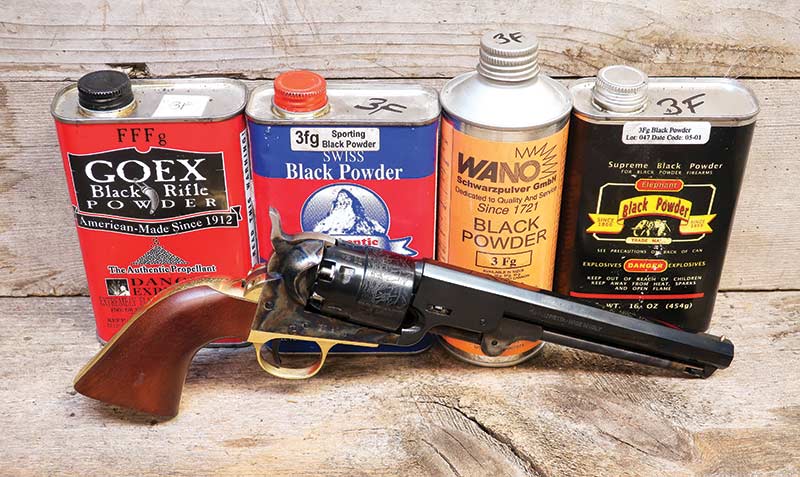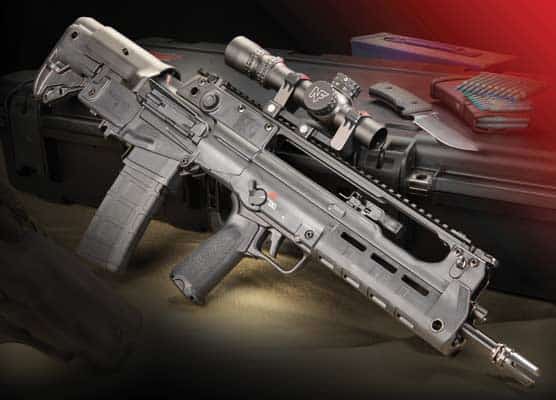Loading For Percussion Sixguns
Part One: .36 Caliber Round Balls
The Walkers and the Dragoons at 4 to 41/2 lbs. were mainly used by the military and carried in pairs in pommel holsters. For most civilians they were deemed too heavy to even carry on a belt, let alone for fast work from a holster but the advent of the 1851 .36 caliber Navy revolver changed all that. With the arrival of this beautifully balanced full-sized, six-shot .36 caliber revolver, a holstered sixgun always immediately available became a reality. Carried mostly in crossdraw Slim Jim holsters, they were both fast from the leather and convenient to carry.
In The Navy
The Colt 1851 Navy .36 in replica form has been offered by several manufacturers, including under Colt license in the 2nd Generation run beginning in 1971 and then the 3rd Generation Signature Series in the early 1990s. All of these were a cut above most replicas when it came to fit and finish. My 3rd Generation Signature Series Navy is beautifully finished and fitted with blue cylinder and barrel, case-colored mainframe, hammer and loading lever and silver backstrap and square back trigger guard. The action is smooth, the cylinder locks up tight and it shoots very well with either Goex FFFg or Pyrodex P.
Sights consist of a gold bead front sight that mates up with a notch in the cocked hammer serving as a rear sight. Just as with almost all other Colt replicas, the front sight needs to be taller as the point of impact for this 1851 Navy is 3″ to 4″ high at 50′.
Today the 1851 Navy Model is available from both Pietta and Uberti. All of the ones I have been privileged to shoot have shot anywhere from 6″ to 10″ high at 50’. These Colt replicas can be brought closer to hitting point of aim by replacing the front sight with a Remington New Model Army-style sight set in a dovetail. This sight is tall enough to be filed for elevation and can be tapped in either direction to correct windage.
Italian replica 1851 Navy models carry the same 7 ½” octagon barrel as the originals. They are well-balanced sixguns with one-piece walnut grips and case-coloring on frame, hammer and loading lever. They can be had with a brass backstrap and trigger guard or a silverplated blackstrap and trigger guard, either round or square backed. Actions are smooth and tight on all recent examples I have tried. Fast-handling with mild recoil and good accuracy make for very pleasant shooting.
Today’s replica 1851 Navy sixguns leave little to be desired as far as fitting and finishing. However, they may require smoothing and tuning to shoot reliably. These days I automatically replace the factory nipples on every new percussion revolver with stainless steel SliX Shot nipples from SliX Springs. These are about $6 each and are a worthy investment to promote reliability and greatly lessen the possibility of fired caps jamming the action.
A big problem with replica percussion Colts is cap jamming and/or cap sucking. It is a rare out-of-the-box Colt replica that does not exhibit one or both of these problems. The former is caused by the fired percussion cap falling into the action while the latter comes from the face of the hammer pulling the fired cap off the nipple.
This was rarely, or never recorded with the originals and the reason was the caps in the mid-1800s were heavier and thicker than today’s offerings. The SliX-Shots take care of this problem especially when combined with smoothing the face of the Colt hammer and also defanging it around the safety notch by removing any sharp edges that would seize the fired cap.
Army Vs. Navy
The Remington New Model Army is also available in .36 caliber. It is mostly referred to as the Model 1858 though there never was a Model 1858 and it would be better served if it was called the Model 1863. The original New Model Army .36 was slightly smaller in size than the .44; however, the modern version, probably due to manufacturing considerations, is built on the same size frame. It shoots so well I would hesitate to think a smaller-sized frame could do as well. This .36 has also had the factory nipples replaced with stainless steel SliX Shots.
For shooting my .36 percussion sixguns, I mostly use .375 Speer round balls along with the Remington #10 or CCI #11 percussion caps. If the powder charge allows, I insert a lubed wad over the powder before seating the ball. These round balls are swaged so they do not have a casting sprue. If cast bullets with a sprue are utilized, care must be used to make sure the sprue is either on the top of the ball or the bottom of the ball when it is loaded into the cylinder.
The reason for this is if the sprue is on the side, it can interfere with a tight seal and can lead to chain fires. All loads, whether using a wad or not, are lubricated by filling in the front of the cylinder over the ball with a homemade lube usually made of a 50-50 mix of beeswax and mutton tallow. For a softer lube I go with the same formula of beeswax and vegetable oil. Whichever is used, I just smear it over the end of the chamber using something simple as a popsicle stick, butter knife (my preference) or a small pocket knife. Both the wad and the lube help to keep the barrel fouling soft; however, it is the tight-fitting ball that prevents chain fires (more than one chamber going off at a time).
The way to tell if the ball is tight enough is by the presence of a small ring of lead on the front of the cylinder when the bullet is seated. If the bullet proves not to be tight enough, .380″ bullets are available.
If one looks at the paper ballistics, the .36, numerically speaking, has similar muzzle energy ranking it with the .32 ACP, while the non-Dragoon .44, at best is a .38 Special +P. That is only on paper and I don’t buy it! Muzzle energy figures are just that, figures on paper. They do not take into account the alloy of the bullet, shape of the bullet and bullet diameter.







